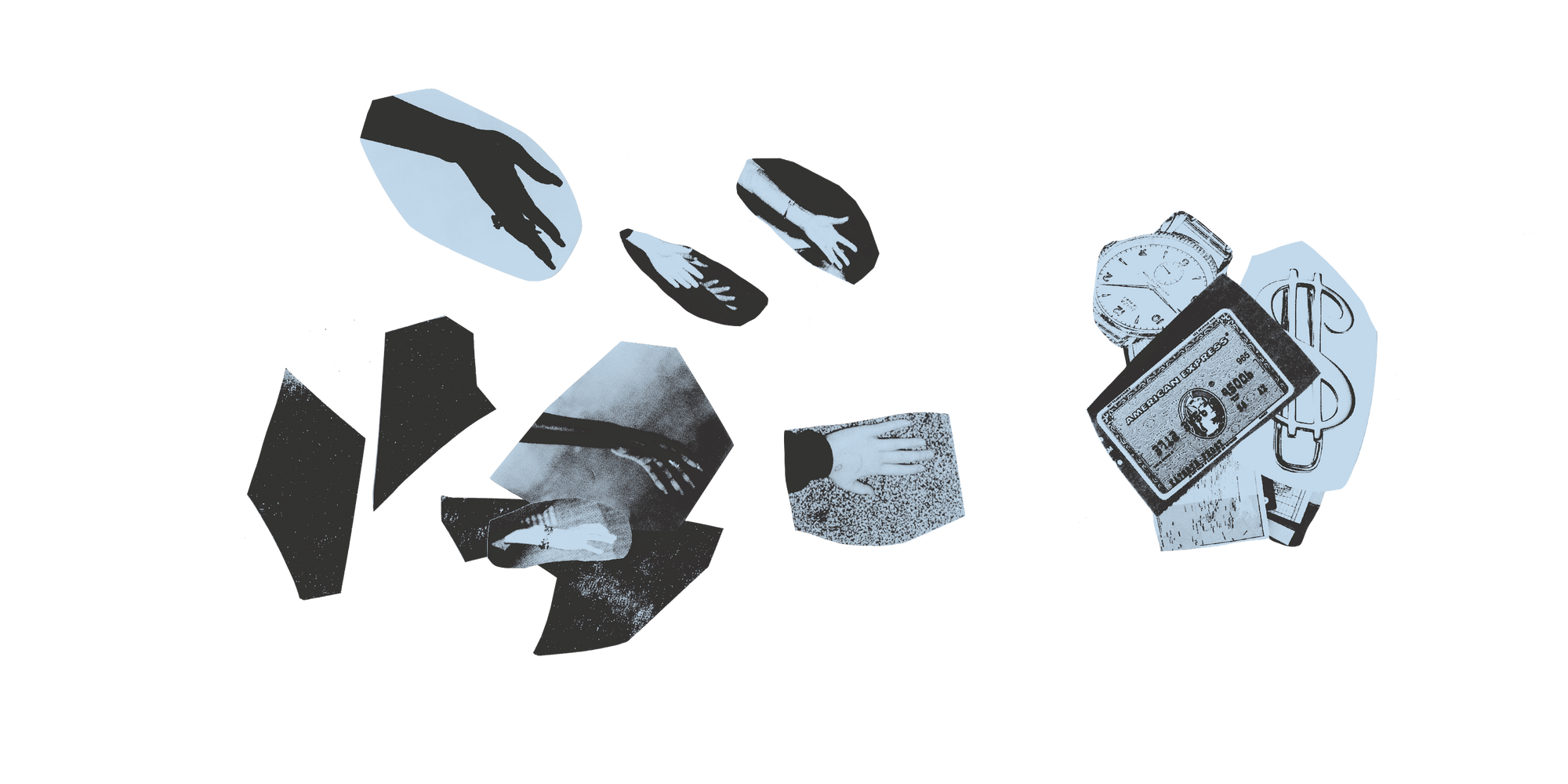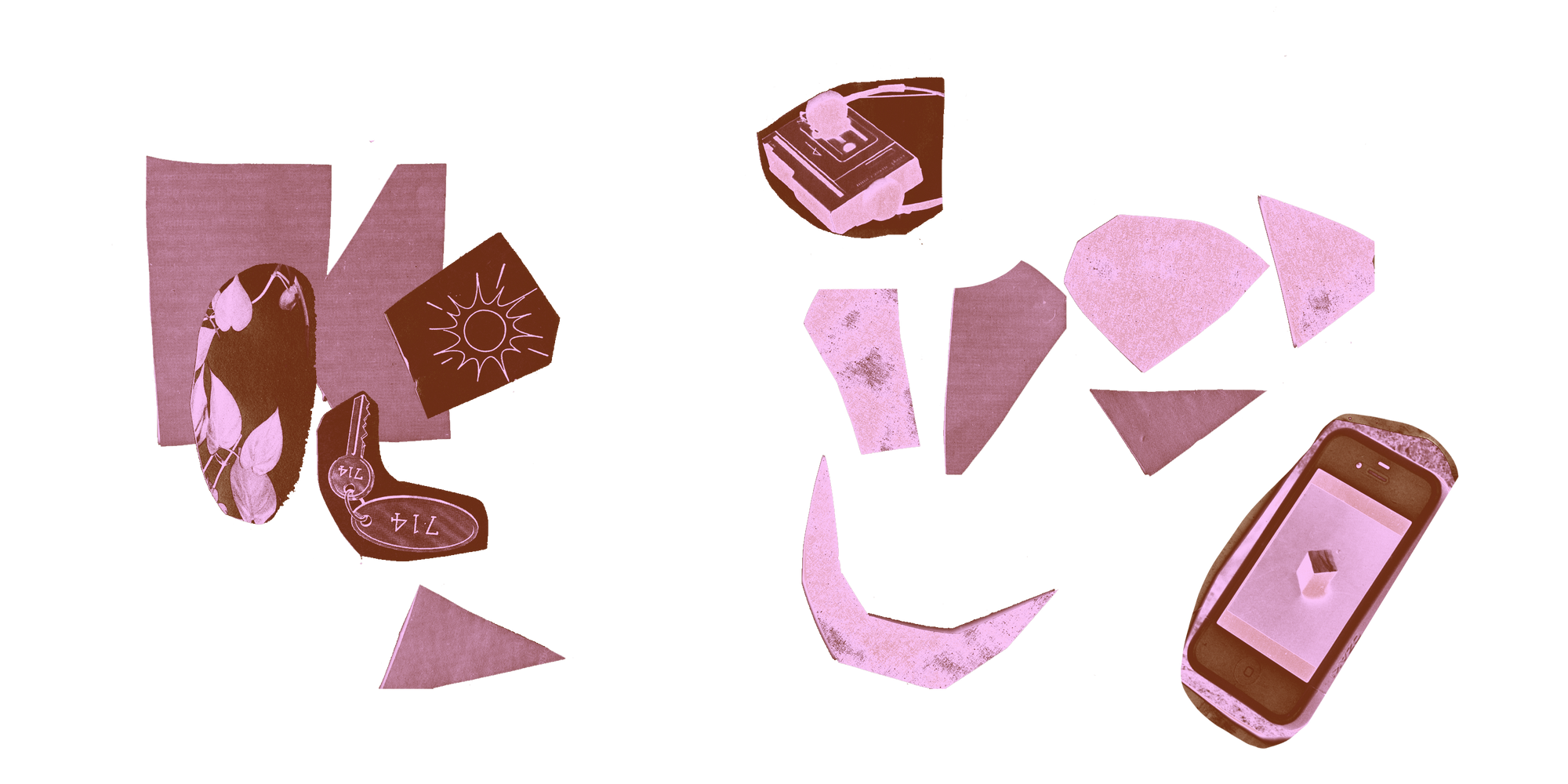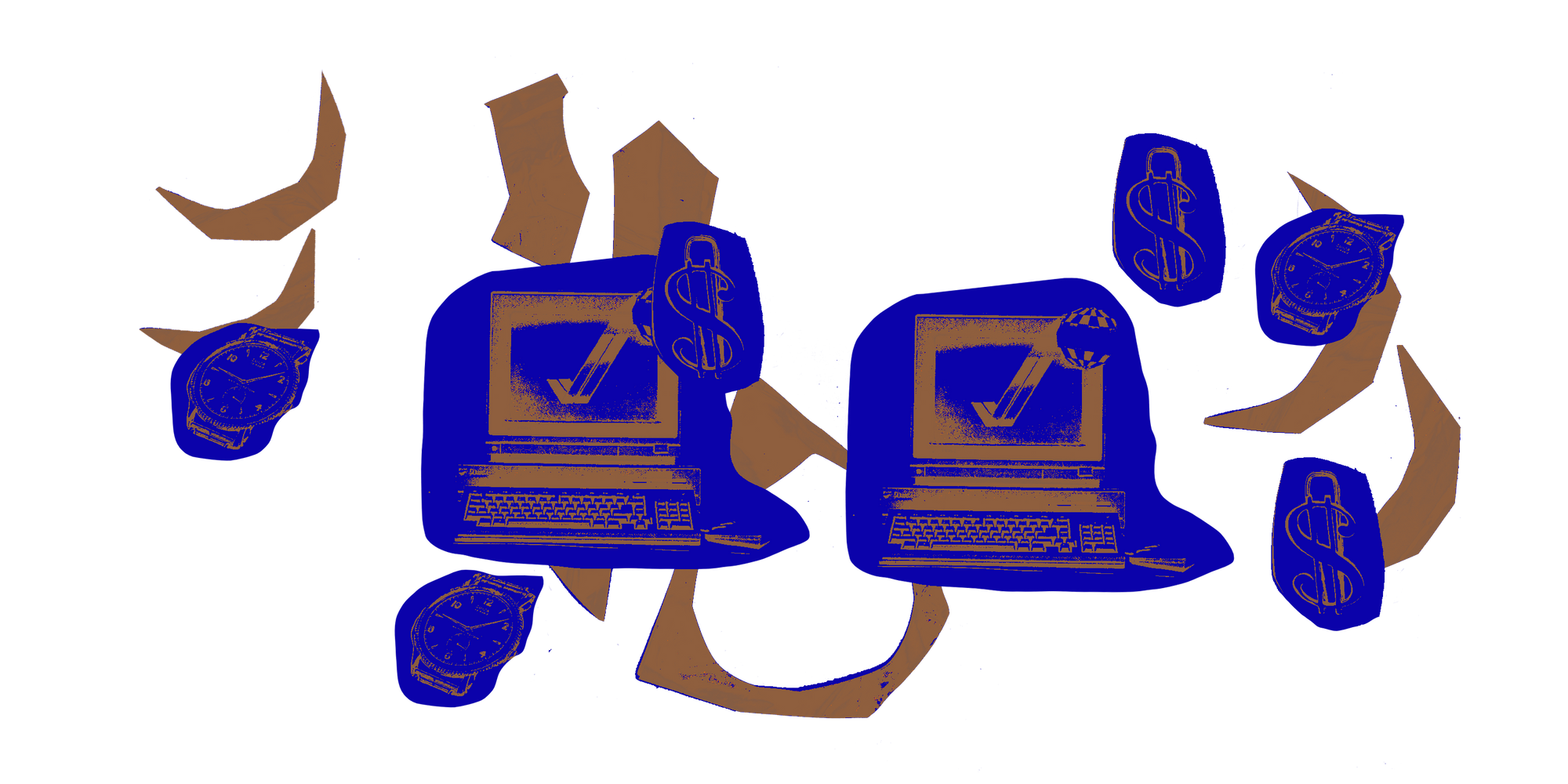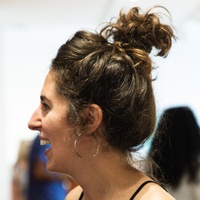How to feel like you have enough
You’re showing your work, you’re getting out there, and you’ve had some success. Maybe you’ve made some sales and gotten some recognition, but you can’t help feeling that you’re still behind. Everyone else seems to have more — followers, opportunities, time. They seem to have it all figured out. It’s starting to feel like there will never be enough money, connections, or recognition to give you the stability and success you’re looking for as an artist.
If this feels familiar, and it’s a common feeling for many creative people, you are experiencing the pangs of scarcity mindset.
I first got obsessed with this topic after reading Jessica Abel’s great writing on scarcity, and later, the research of Sendhil Mullainathan and Eldir Shafir in their book Scarcity: Why Having Too Little Means So Much. This led me down an incredible rabbit hole, where I discovered how artists are particularly vulnerable to this way of thinking. I started to observe my own behavior and realize I was often working from a place of lack, believing that what I was seeking was in limited supply. I was moving from task to task like a chicken with my head cut off, always feeling like I was catching up. I realized that if I was going to find stability (and some peace of mind) in my life as an artist, I was going to need to change my approach.
In my work as a teacher and coach, I started talking about these ideas in public. I now bring artists together to discuss how this feeling of lack impacts creative communities. I offer tools we can all use to start changing the way we think, work, and collaborate — to see beyond what we lack, and recognize the abundance that’s often right in front of us.
Below is my guide to understanding scarcity mindset — what it is, how it affects us, and steps we can take to see more opportunity and potential in our creative lives.
— Christine Garvey, artist and coach
What is scarcity mindset?
Perhaps you’ve heard of scarcity mindset before, but didn’t quite know what it was or why it’s so toxic. Here’s a definition:
Scarcity mindset is the state of believing that what you want is in limited supply. That you will never have enough of that thing.
You could have this feeling around money, time, connections, status, or security. If you experience scarcity around connection, you feel lonely. If you experience scarcity around status, you feel undervalued.
This is a common experience for many of us, and it turns out our brains are doing some interesting things when we feel something is scarce. According to the research of Harvard economist Sendhil Mullainathan and Princeton psychologist Eldar Shafir, when we are in scarcity mindset, we do a few key things:
1) We engage in “tunneling.” We get obsessed with the problem we are trying to solve. This could be manifesting an opportunity, getting more Instagram followers, or finishing a project.
According to Mullainathan and Shafir, there are pros and cons to being in “the tunnel”:
-
The pros: We feel super focused and effective. We feel like we can accomplish anything. We make fewer mistakes with regard to what we’re “tunneling” on.
-
The cons: We engage in myopic thinking. We can’t see outside of the tunnel and have blinders on to everything else. We end up losing track of time, missing meetings, or are unable to see opportunities that are right in front of us.
2) We lose our bandwidth. You know that feeling of mental exhaustion when you’ve done too many things in one day? This is the experience of low bandwidth. Bandwidth is our fluid intelligence (ability to problem-solve) and our self control (ability to avoid impulsive decisions). When we feel scarce, these functions diminish significantly.
3) We do trade-off thinking. When we’re in scarcity mindset, we think about things in an either/or vs. a this/and framework. The best way to understand this is through Mullainathan and Shafir’s use of the suitcase metaphor. Imagine you are packing a suitcase for a weekend getaway. If you’re experiencing scarcity mindset, you are working with a smaller suitcase. You can only pack so many things. You have to choose between bringing the extra t-shirt or the umbrella. If you’re working with an abundance mindset, you are using a bigger suitcase. With the big suitcase there is room for many possible opportunities, solutions, and outcomes.

Why are creative people so vulnerable to this kind of thinking?
We feel scarce in many different areas of our lives.
Time, money, status, security, respect. You name it, we’ve felt scarce around it. As artists, we are constantly having to advocate for our value — at work, in galleries, within academia, and in society at large. This sense of scarcity is reinforced by jobs that don’t provide healthcare and contract-based employment, leaving us to feel that security is in short supply. Or perhaps, if we have a full-time job with some security, we experience a scarcity of time for creative projects we care about. Basically, it’s easy to feel like we’re failing in many different arenas at a time. If we’re succeeding in one area, we’re catching up in another.
Creatives love the tunnel.
As Jessica Abel talks about in her blog post, If creativity is so freeing, why do I feel like I’m trapped?, to us, being in the tunnel can feel equivalent to being in the flow. We pride ourselves on our ability to be in the zone. It makes us feel focused, powerful, and effective. This is how we were trained to work in school — to put in our hundred hours and get the work done. Turns out, this forge-ahead mindset is not always the best thing for our brains.
We are always juggling.
Most creative people are juggling many different things at a time. Maybe your juggle involves a day job, a studio practice, parenting, and grant writing. When we are juggling we are moving from one pressing task to the next. We are always “catching up” and feeling a step behind. This exacerbates the feeling of scarcity — the sense that we will never have enough time or energy.

How do we get out of scarcity mindset?
Create an intentional relationship to the tunnel.
We need to examine our relationship to the scarcity mindset tunnel. What topics do we tunnel on? What happens when we tunnel? We need to create an intentional relationship to the tunnel so we can make our laser-focused way of working work for us instead of against us. This means we need to create ways to exit the tunnel when it’s time.
Here are some tips for getting out of that obsessive, myopic, blinders-on way of working:
-
Set aside a specific amount of time for the task you need to get done. Writing a proposal? Working in the studio? Set an alarm for the amount of time you want to dedicate to that task, and when the alarm rings, stop working and shift gears.
-
Get an outside perspective from a collaborator, partner, coach, or stranger. It will give you context and help you identify what you’re not seeing.
-
Get in your body. Frequently step away from what you’re doing. Eat lunch, go for a walk, take a shower, listen to music. This will help you remember that your brain lives in a body that needs some attention. Taking care of it will help you regain your bandwidth, restore your fluid intelligence, and get some fresh ideas back.
Examine where scarcity is reinforced in your life.
A great example of a system that reinforces scarcity mindset is social media. Social media wants you to feel scarce, because this is how it makes money. It wants you to feel like you’ll never have enough exotic vacations, cool shoes, qualifications, etc, so you go out and buy more of those things.
Social media also makes it hard for you to connect with the things you really value. It puts all the people you’re following (your cousin, Cardi B, an artist you love, not to mention a random array of ads) into the same distribution stream, thus making it harder for you to remember what you actually care about and what’s driving you.
No matter what, social media will make you feel scarce in some department of your life or another. So, use it as an instrument for advertising (i.e. to promote your work), which is what it’s built for, and minimize your relationship with it outside of this.
Outside of social media, ask yourself: what other systems do you engage with that reinforce scarcity thinking? Is your work environment a place where you feel respect, security, and money are in limited supply? How is that being reinforced? Take a look at your environment and see if that’s impacted how you perceive what is available to you.
Minimize the juggle.
We can’t do it all. When we try to, we end up doing everything half-assed and feel like trash afterwards. It is essential that we minimize the juggling in our lives and focus on what is most important to us. Setting values-driven priorities is key to being effective and not getting stretched too thin. If this is particularly hard for you, here are some tools:
-
Use a priorities matrix to figure out what to focus on, what to delegate, and what to leave behind.
-
Get a coach or accountability partner to help you recognize your values and set some goals.
-
Try this starter exercise: List everything you’re juggling (creative work, teaching, curatorial projects, parenting, etc.) and pick your top four most important areas of focus. Cut everything else away. This forces you to examine what’s important for you right now and set some goals in those areas.

How can we start feeling abundant?
Get grateful.
Gratitude is a deeply practical thing. Not only does it give you perspective and help you recognize all you can be thankful for, it also helps you identify how you are resourced.
Are you grateful for your creative partner? Resource: a person to bounce ideas off of.
Are you grateful for your studio? Resource: a venue to make your work, share ideas, and connect with people.
Are you grateful for your cat? Resource: a couch buddy who makes your home a happier place.
When you’re slipping into scarcity mindset, stop and get grateful. Make a list. Look at all the ways you are resourced: the support systems you have available to you and the places where you are already kicking ass.
Getting grateful helps you flip the switch from “this is what I’m missing” to “look at everything I have.”
Recognize that opportunities are renewable resources.
When we are seeking opportunities for our work, it’s easy to fall prey to scarcity mindset. We can feel competitive, like what we want is in limited supply. We start thinking with the “small suitcase” mindset, and forget that opportunities are renewable resources. They are abundant and replenishable. They’re all around us in different forms. To change this way of thinking, try to give from a place of abundance, not lack.
By thoughtfully sharing an opportunity or asset with someone in your community, you not only release the scarcity grip, but in some cases, it helps you identify more clearly what you value. You can’t seize every opportunity, so if you see something that is a great fit for someone else, passing it on is a win/win. You get to spend more time on your priorities, and your community benefits from the resource. Opportunity hoarding helps no one. A rising tide lifts all boats.
Practice luxury.
In The Artist’s Way, Julia Cameron talks about the importance of allowing yourself to experience small, everyday luxuries. A midday nap, a good cheese, a hot bath, a new plant, and silence are all small luxuries. Luxury is not about designer goods or fancy vacations, but about recognizing what’s important to you, and giving yourself permission to experience abundance in your everyday life. If you actively exercise abundance with yourself (because you’re worth it!), it becomes easier to recognize it out in the world.
Make a list of things that would feel luxurious to you. Maybe it’s an hour to spend reading, an afternoon in the park, or a night working on a creative project you haven’t been able to focus on lately. When is the last time you did one of these things? Do it this week. It will make you feel like a million bucks, and help you start experiencing abundance and new possibilities.
Let yourself play.
It can be difficult to allow ourselves time to just experiment and have fun in our creative practices. This is exacerbated by things like social media, which makes us more product-driven, tempting us to produce something that can easily go up on the internet by the end of the day. It’s important for artists to cultivate the space for play — to create something without an end result in mind. Play is the expression of abundance in the studio. Artists need to experience an abundance of new ideas, methods, and materials. Play helps us expand the “suitcase” — our conception of what belongs in our work — and make room for new possibilities to enter into our creative practices.
As you get out of scarcity mindset, try to carve out 30 minutes every week to do something that is not output-driven. Let yourself experiment. Do something that is just for you, no one else. Make this a habit.

In summary…
Scarcity mindset is the state of believing that what you want is in limited supply. When we’re in scarcity mindset, we engage in either/or thinking, tend to “tunnel” or focus obsessively on the particular thing we feel scarce around, and as a result, lose our bandwidth and perspective.
To get out of the scarcity trap, we need to create an intentional relationship to “the tunnel,” set values-driven priorities to minimize our juggling, and get help from outside resources. We need to examine systems we engage with that reinforce feelings of lack, and change our relationship to these things. We need to cultivate time for play, allow ourselves small luxuries, and support each other. Most of all, we need to focus on the ways we are already resourced, the places where we are already kicking ass, and leverage this gratitude and perspective to help us see opportunities as renewable resources.
Christine Garvey is an artist and coach based in Austin, Texas. Her creative work has been recognized with a Fulbright Research Grant, an Austin Community Initiatives Award, and a Fellowship from Concordia University Montreal. Since 2010 she’s been a teaching artist and faculty member at institutions like University of Texas at Austin, Florence University of the Arts, and Pioneer Works Center for Art and Innovation. She writes and speaks about ideas that impact artists, including scarcity and financial stability, and helps artists set goals and gain momentum in their creative practices.

